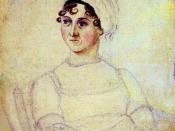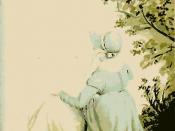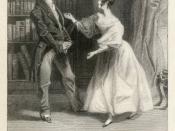Jane Austen deliberately confines her description to the small tranquil world of the English landed gentry of her time, and takes love and marriage as her constant subject matter. As a writer with sharp insight, she acts not as a romantic matchmaker, but as a realistic painter who presents a picture of her society and her class with light and her class with light and shade in right proportion.
In her earlier major works Sense and Sensibility and Pride and Prejudice, marriage serves as the main thread, the central subject, and the comic ending. The first story focuses on how the elder Dashwood sisters Elinor and Marianne experience love and achieve marriages after a series of setbacks. The second one takes the marriages of the Bennet daughters as its main thread, and the conflict, affection and marriage between Darcy and Elizabeth Bennet as the core plot. In Jane Austen's novels, not only are the young characters concerned about the marital affair, but also the parental generation are busy with the promotion of desirable matches, As a matter of fact, marriage in Jane Austen's time was more social than personal decision: it involved and connected families as well as lovers, and was based on material and social considerations as well as mutual affection.
Thus it is not surprising to see from Austen's presentation both mercenary marriages--for social improvement or security--and marriages for love.
In this dissertation, marriages mirrored in Sense and Sensibility and Pride and Prejudice are roughly divided into two types: marriage for interests and marriage for love, which stand for the shade and light respectively in the world depicted by Austen. This dissertation aims to analyze the reflected marriages, and to explore the writer's attitude toward her subject.
Marriage in Austen's works is far from being mere union of...



Good.
Good essay. Just one thing though, where are the quotes from? The citations are left out.
1 out of 1 people found this comment useful.